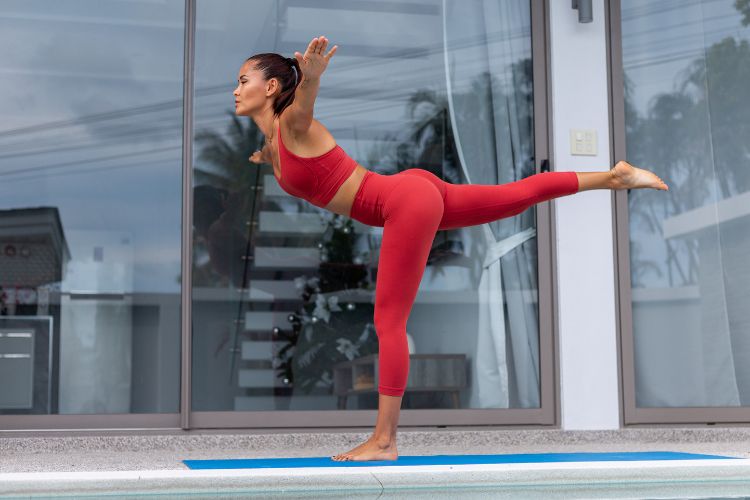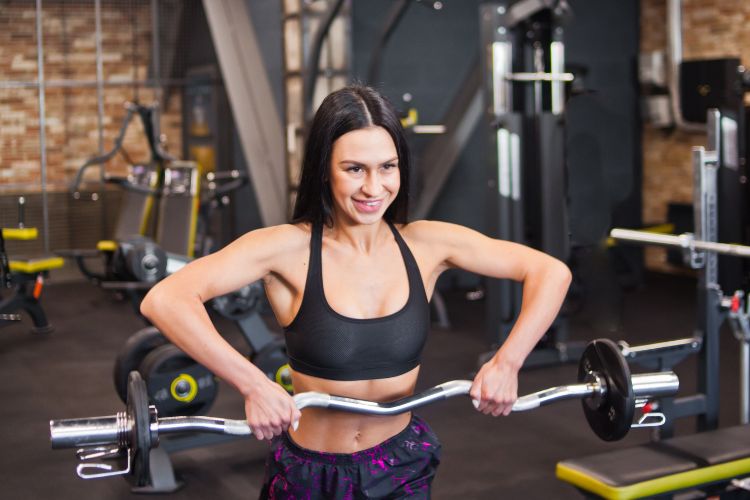Sign up for workout ideas, training advice, reviews of the latest gear and more.





When people think of yoga, they often picture peaceful stretches, deep breathing, and flexible poses. While that’s true, yoga is also an incredible tool for building core strength. Core muscles are crucial for balance, posture, stability, and everyday movement. In this guide, we’ll explore how yoga can effectively strengthen your core, which poses to include, and how to build a strong foundation for both yoga and life.
Before diving into the workouts, it’s important to understand why core strength is vital. Your core isn’t just your abs—it’s a group of muscles including the rectus abdominis, obliques, transverse abdominis, pelvic floor, and lower back. These muscles stabilize your spine and pelvis, support movement, and prevent injury.
Strong core muscles improve posture, reduce back pain, and enhance performance in other workouts and daily tasks. Whether you’re walking, lifting, or just sitting at a desk, your core is always at work. That’s why incorporating yoga core workouts can offer full-body benefits without the need for equipment or a gym.
Yoga offers a unique approach to strengthening your core because it integrates breath, balance, and controlled movement. Unlike traditional ab exercises like crunches or sit-ups, yoga encourages mind-muscle connection, which enhances your ability to activate and engage the correct muscles.
Yoga is gentle on joints while still challenging the core through isometric holds, transitions, and balance work.
Core-focused yoga poses enhance postural awareness, helping to correct slouching and improve spinal alignment.
Yoga improves the core’s ability to stabilize and coordinate with other muscle groups, leading to better movement patterns in everyday life.
Practicing yoga regularly increases your mind-body connection, allowing for better control, stability, and overall performance.
Here are some of the most effective yoga poses that specifically target the core muscles. These poses can be integrated into a routine or practiced as a standalone yoga core session.
The plank is a classic pose that activates the entire core, including the shoulders and glutes.
How to do it:
Start in a high push-up position with shoulders over wrists and a straight line from head to heels. Draw the belly in, engage your thighs, and hold for 30–60 seconds.
Tip: Avoid letting the hips sag or lifting too high. Keep your core tight and spine neutral.
This pose challenges balance and strengthens the deep abdominal muscles.
How to do it:
Sit on the floor with knees bent and feet flat. Lean back slightly and lift your feet so your shins are parallel to the floor. For more challenge, straighten the legs. Extend your arms forward and engage the core.
Hold for 30–60 seconds, rest, and repeat 2–3 times.
The side plank fires up the obliques and improves overall core stability.
How to do it:
From a high plank, shift weight onto one hand and rotate your body to the side. Stack your feet and raise your opposite arm. Keep the hips lifted and core tight.
Hold for 30–45 seconds each side.
A variation of the traditional plank, dolphin plank puts extra emphasis on the shoulders and transverse abdominis.
How to do it:
Start on forearms with elbows under shoulders. Extend your legs behind and lift your body off the ground. Keep your neck neutral and core braced.
Hold for 30–60 seconds.
This backbend strengthens the lower back and glutes, which are essential components of core stability.
How to do it:
Lie on your stomach, arms by your sides, and legs extended. Inhale to lift the chest, arms, and legs off the ground. Engage your glutes and back muscles.
Hold for 20–30 seconds, rest, and repeat.
A variation of the side plank, this pose targets obliques and shoulder stability.
How to do it:
Lie on one side, propped on your forearm. Stack your feet and lift your hips. Keep your body in a straight line and core tight.
Hold for 30 seconds each side.
Combines core activation and dynamic movement.
How to do it:
Start in Downward Dog. Shift into plank and draw your knee to your elbow. Return to Downward Dog and switch sides.
Repeat for 5–10 reps on each side.
A great combination move to activate the entire core while also improving mobility.
How to do it:
From Downward Dog, lift one leg high. Shift into plank as you draw the knee to your nose. Return to start.
Repeat 5–10 times each side.
Here’s a simple yoga workout for core strength that you can perform in under 20 minutes. No equipment needed—just a mat and your breath.
Warm-Up (2–3 minutes)
– Cat-Cow Stretch
– Child’s Pose
– Gentle Downward Dog
Cool Down (3–5 minutes)
– Cobra Pose
– Seated Forward Fold
– Supine Twist
– Savasana (Corpse Pose)
This sequence hits all areas of the core and enhances flexibility and focus.
The breath is key in yoga. Inhale to prepare and exhale to engage and contract your core. This rhythm helps deepen the movement and support muscle activation.
In yoga, “bandhas” are internal locks that help harness energy. Engaging the Uddiyana Bandha (abdominal lock) strengthens your transverse abdominis and improves core control.
Fast reps aren’t the goal in yoga. The slower you move, the more your core must work to stabilize your body. Control equals strength.
Form is critical. Whether you’re in plank or boat pose, ensure your spine is long, shoulders are relaxed, and abs are braced.
To build core strength with yoga, consistency is key. Aim for 3–4 yoga sessions per week focused on core engagement. You can also integrate a few poses into your daily routine or cool-down stretches after other workouts.
While yoga is effective on its own, it can also complement strength training, HIIT, and Pilates. You might combine yoga core sessions with bodyweight training or resistance workouts to create a holistic fitness plan.
This integrated approach improves not only strength but also recovery and mobility.
If you’re new to yoga, don’t worry—many core-focused poses can be modified. Start with bent knees in boat pose, forearm planks instead of high planks, or perform side planks with one knee down.
The goal is to build gradually and consistently. Your strength and confidence will grow with each practice. Over time, you’ll notice better posture, a flatter stomach, and more control in all your movements.
Yoga is a powerful tool for developing core strength in a balanced, mindful, and functional way. From improving posture and reducing back pain to enhancing stability and body control, yoga offers a sustainable path to a stronger core.
No matter your fitness level, incorporating yoga core workouts into your routine will help you move better, feel stronger, and live more confidently. All it takes is your mat, your breath, and your commitment to show up.
With consistent practice (3–4 times per week), you may start to feel stronger and more stable in 2–4 weeks. Visible changes in muscle tone may take 6–8 weeks depending on your routine and nutrition.
While yoga alone may not give you six-pack abs, it does tone and strengthen the abdominal muscles. For defined abs, a combination of yoga, cardio, and a clean diet is recommended.
Yoga engages the entire core more holistically than isolated crunches. It focuses on breath, balance, and posture, making it a better long-term strategy for core health and injury prevention.
Stay up to date on the latest women’s health, fitness and lifestyle trends and tips.